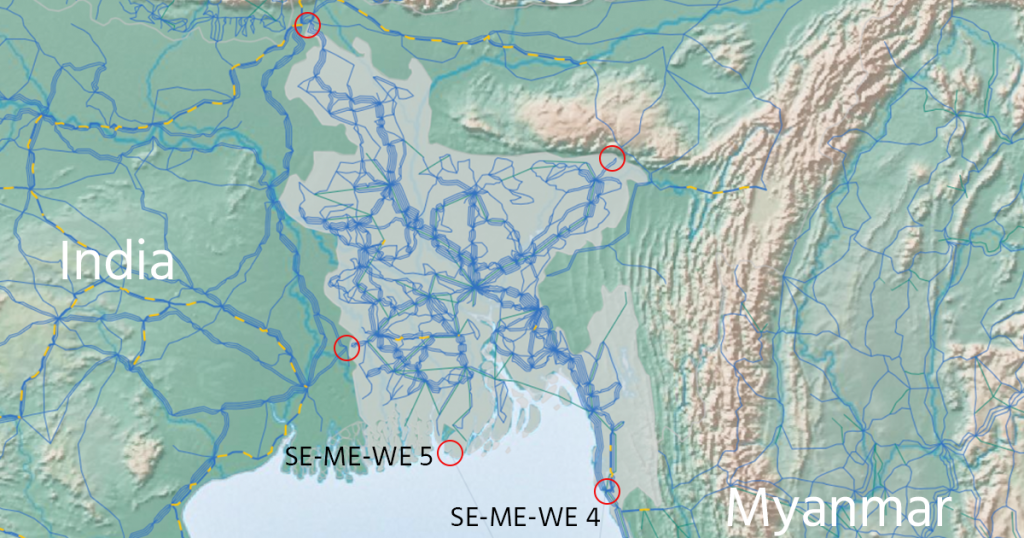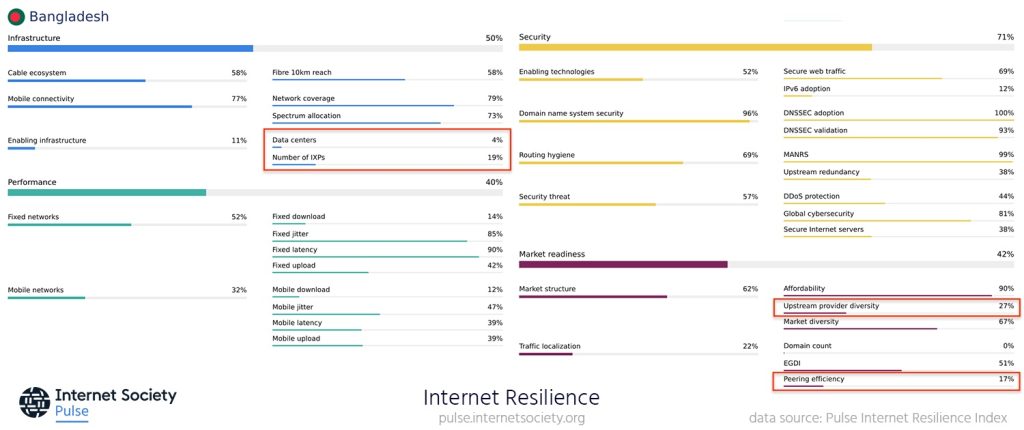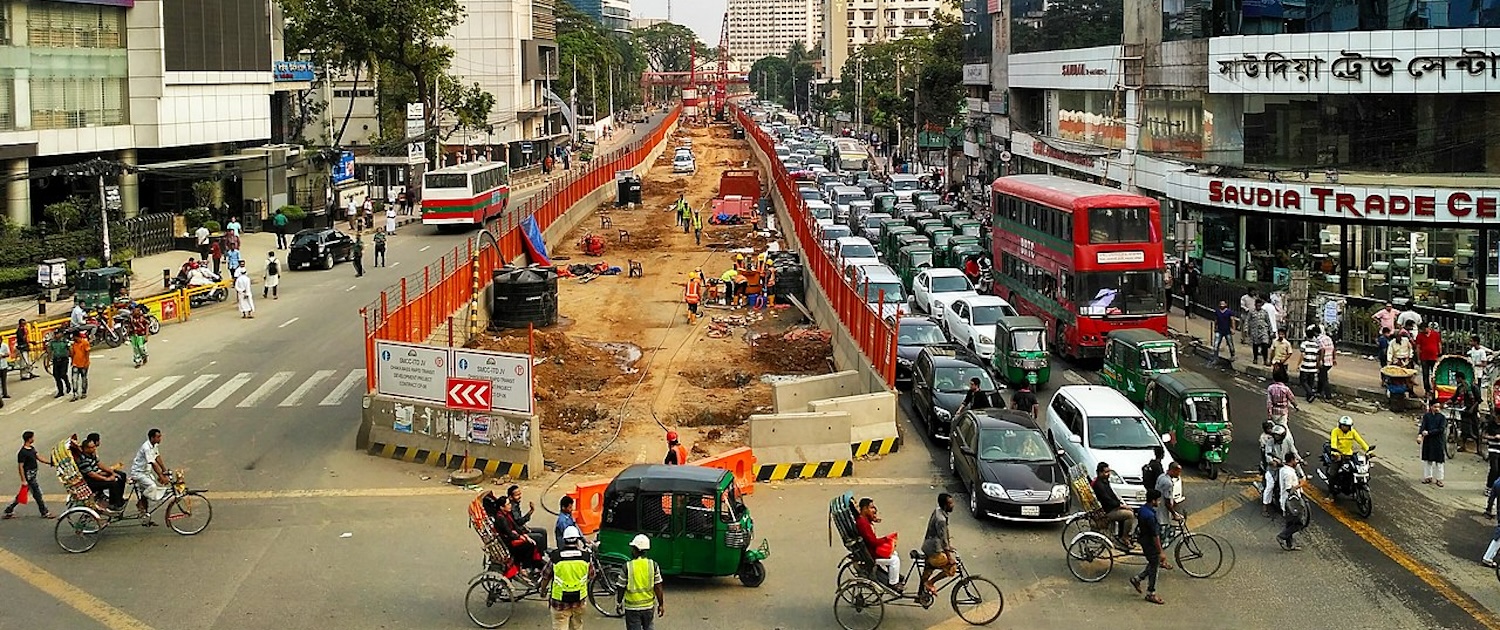Bangladesh is experiencing slightly slower Internet connectivity to international hosted services due to an outage to one of the two submarine cables connecting the country.
The outage to SEA-ME-WE 5 began on 19 April. Preliminary reports suggest it is due to a cut in the Straight of Malacca between Malaysia and Indonesia, one of several choke points in the world through which more than ten submarine cables are laid (Figure 1).

The outage has resulted in a ~25% increase in latency for web services that Bangladesh users normally access from Singapore (Figure 2).

Over the last two months, the world has become more aware of these submarine cable choke points, with multiple submarine cables being cut in the Red Sea and off the coast of West Africa. The latter has severely affected multiple countries that rely predominantly on at least one of these submarine cables for international connectivity.
Read: 2024 West Africa Submarine Cable Outage Report
Bangladesh Submarine Cables PLC (BSCPLC), which operates the Bangladesh branch of the cable, reported on 20 April that a repair ship had been commissioned and is expected to restore connectivity within “two to three days.” At the time of writing, there are no reports of any other submarine cables in the area being compromised.
Greater Upstream Provider Diversity Required
Before the outage, SEA-ME-WE 5 provided Bangladesh with 1.7 Tbps of international capacity, roughly a third of the country’s total international bandwidth usage. Bangladesh’s second submarine cable, SEA-ME-WE 4, provides around 800 Gbps of international capacity, though operators are working to increase capacity to offset the loss of SEA-ME-WE 5. BSCPLC operates both cables.
The majority of Bangladesh’s international capacity comes from three terrestrial cross-border cables with India (Figure 3). A cross-border cable between Bangladesh and Myanmar is also present but is not currently operational.

Even though Bangladesh expects to connect to another submarine cable in 2026 (SEA-ME-WE 6), it will continue to rely predominantly on these terrestrial cables and the access providers in India that service them. As of June 2023, Bangladesh has 34 registered International Internet Gateways.
This lack of upstream provider diversity (27%) is apparent in Bangladesh’s Pulse Internet Resilience Index profile (Figure 4).

Projects such as the reported private submarine cable connecting Bangladesh and Singapore, commissioned by a local consortium, will improve diversity and potentially affordability. However, other major factors are impacting Bangladesh’s overall Internet resilience, including a lack of data centers (5%), Internet Exchange Points (IXPs) (17%), and networks peering with its IXPs (17%).
Notably, Internet traffic at Bangladesh Internet Exchange (BD-IX) has only dropped marginally since the outage (Figure 5).

If we look at the top hosting providers in Bangladesh, we can see that three — Cloudflare, Akamai, and Facebook — provide most of their content locally. This means that their current services are less affected by the cable outage. Around 69% of Bangladesh’s top 1,000 websites are hosted and served locally.

Learn how IXPs and data centers help improve latency and reduce the cost of local Internet traffic, as well as the Internet Society’s goal to increase local traffic.
Photo by Salim_Khandoker Via Wikimedia Commons.


